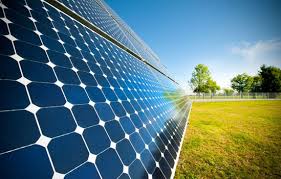An exposition of the role of external base absorbent of solar energy with intelligent constructional structures with a view to reduction in energy use
Keywords:
Smart buildings, smart glass, external ducts, solar energy, reduction of energy consumptionAbstract
There is no doubt that one of the most important challenges facing engineers and designers ofarchitectural design and engineering is indeed the problem of energy. It is inline with this trend of thought that energy can be seen as a critical elementwith a view to the enhancement of mans economical and social welfare and it isin the sphere of construction engineering that the need arises for the use ofthe appropriate construction material which can best serve this vital aim ofenergy conservation by using renewable energy sources such as solar energy. Itis therefore a foregone conclusion that the more we are capable of using solarenergy we are helping to conserve our other energy sources and thus help toreduce our overall energy consumption. It is with this view in mind thatconstruction engineers and those working in building design have aimed at usingsystems that can manage energy consumption within their constructionalstructures, having arrived at a point where their building designs can actuallybe termed intelligent or smart constructionalstructures, whereby the system asa whole is capable of using solar energy instead of the traditional fossilfuels. Yet that which makes possible the use of solar energy more so today thanever before is the use of external ducts, which are installed in places mostexposed to sunlight, and have the capability of changing color and becominglighter or darker as the state of exposure calls for is the use of a certaintype of smart glass within the built structure, that makes possible the mostefficient use of sunlight entering the building, having the capability ofchanging color in correlation to the amount of sunlight received and becominglighter or darker appropriately, allowing that quantity of sunlight to enter thebuilding as is needed to counteract the greenhouse effect which causes anuncontrolled increase of temperature within the built structure, and thusallowing the most efficient use of solar energy in keeping the place pleasantlywarm in winter and cool during the summer months. It is therefore from thisperspective that we have through the use of library studies embarked on theinvestigation of the particular structural make up of this type of smart glasswith the capability of structural change in its color variance which counts as the most important compositional part ofsmart buildings, to explicate the mechanisms at work and the benefits acquiredfrom the use of such ducts within a smart constructional structure as apracticaltechnique in line with reducing energy consumption so that designersof any type of construction may make efficient use of this technology.
References
Dussault, J., 2011. assessment of building energy efficiency with smart window glazing curtain walls, smart
materials. struct. NDT in aerospace confer. Canada.
Gavrilovic, D., 2011. usage of smart glass panels in commercial and residential building. Arch. Civ. Eng. J.
Gharavolbashi, M., 2012. smart glass as the new innovation offered in the construction industry and as
insulation material in the same field, the first national exhibition for the introduction of insulation
technology in buildings seen as a novel approach in setting trends in architectural design. Islam.
Azad Univ., Bojnurd Branch.
Mokhtarian, A., 2011. smart buildings and their role in efficient energy consumption. Arch. mindmagaz.,
th issue.
Wang, K., 2012. Integrated energy storage and electro chromic function in one flexible device: an energy
storage smart window. Ener. Env. Sci. J.

Published
How to Cite
Issue
Section
Copyright (c) 2014 Samira Sadeghi Kelishadi, Zahra Kazemi

This work is licensed under a Creative Commons Attribution-NonCommercial-NoDerivatives 4.0 International License.
